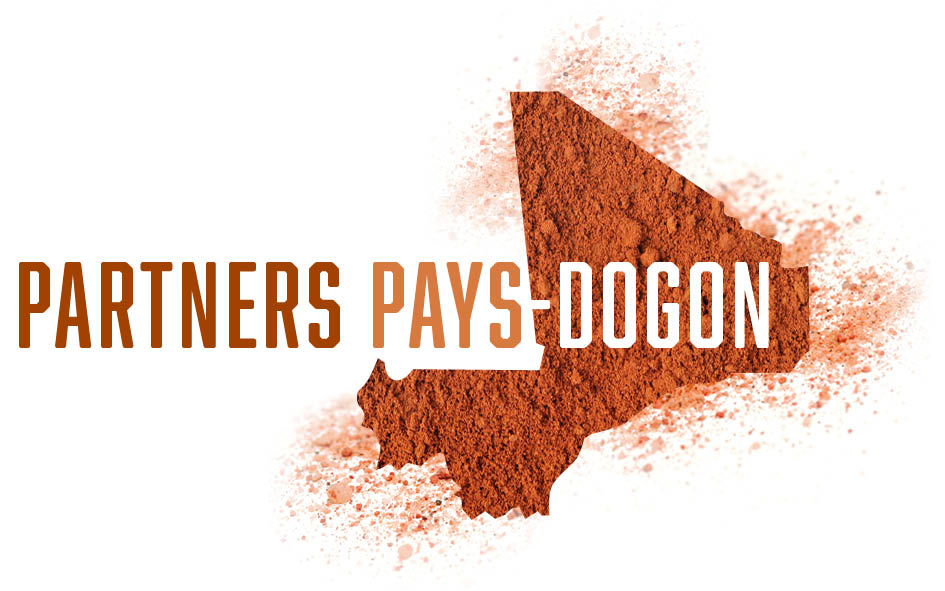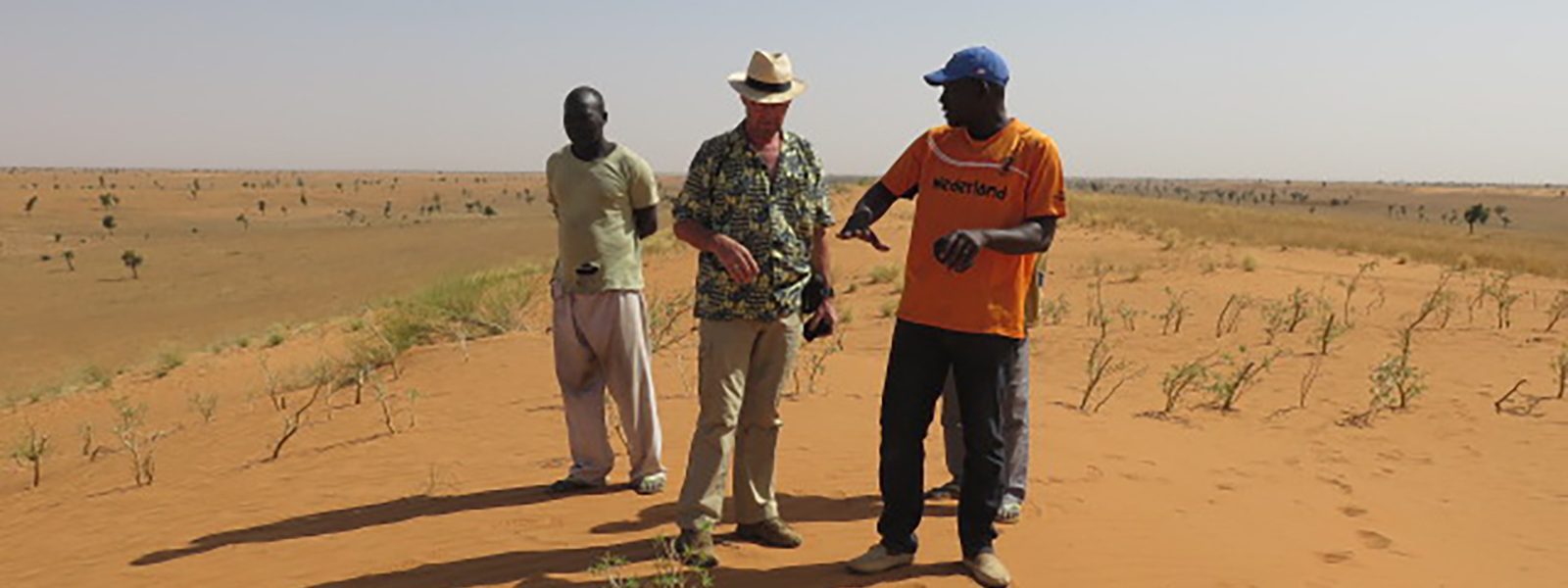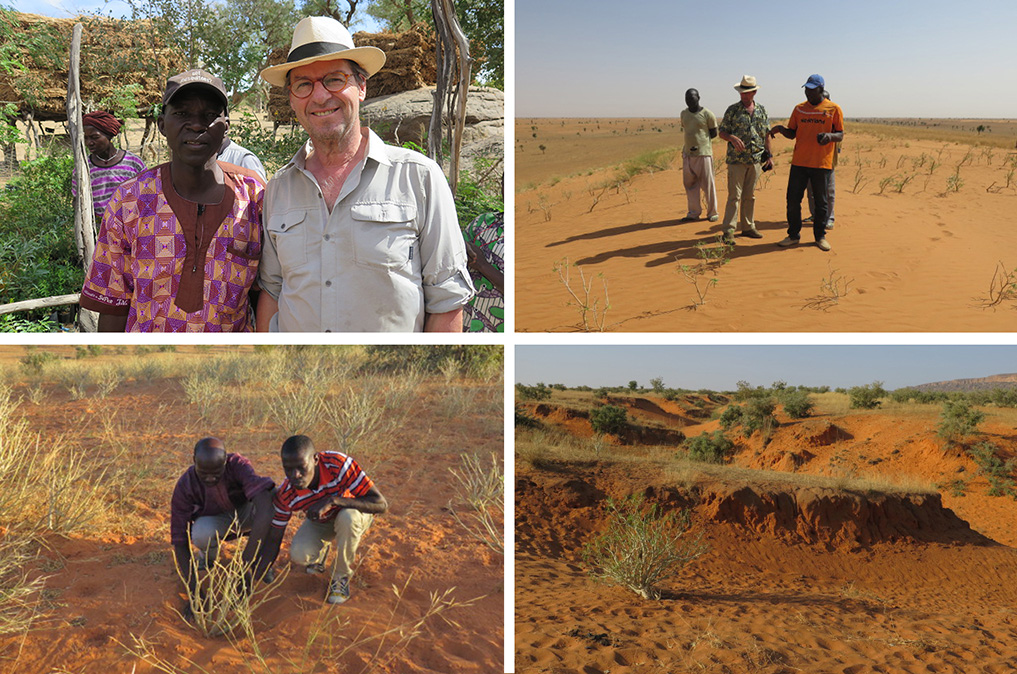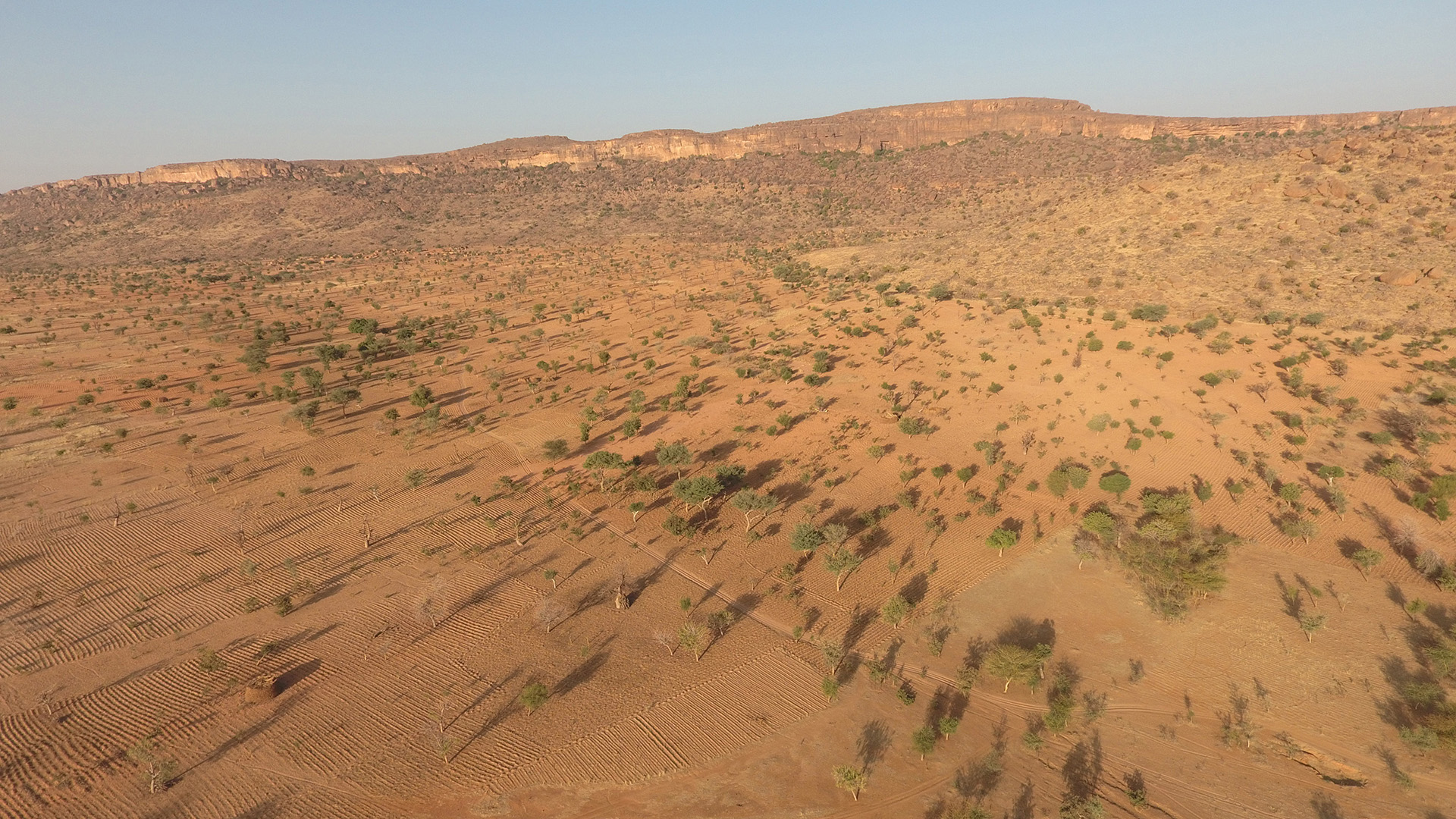In the end of January Jan Joost and Rob traveled to Mali for the new foundation Partners Pays Dogon. For Rob this was the first time in order to get a picture of the Green Desert Initiative, the actions to make green the plain below the cliff. The most important part of the plan is to plant, in order to hold the moving sand and make new forms of agriculture possible.
The planting program started in 2013 and run until today. On the dune in front of the cliff, ADI not only planted Euphorbia with the help of the villagers (which forms a dense bushes) to capture the sand, but also created enclosed forest areas in order to obtain wood and tree products. On the fields farmers plant trees for shade and private use. Remarkably, after one year the soil is covered with grass much faster than trees and shrubs. Farmers seek forest areas to place fields on their side. In this way they suffer less from problems with goats and sand. But the young trees are having a hard time: not only it is dry, but also mice and locusts attack them.
In discussions with the Dogon, it became apparent that before the plain was much greener; the growth of livestock has significantly affected the natural vegetation. That led to our conviction – that we share with Saïdou Teme, the inspirational coach and supervisor of the projects – that only planting is not enough, there is also a strategy for the cattle to be connected.
It has been agreed that Rob, who offers a guest lecture on the Green Desert Initiative, will try to invite the scientific institutes in the Netherlands to do research and collect best practices, to make this promising initiative more powerful. Wageningen, Utrecht and Amsterdam have already expressed interest. We are working on upscaling the Green Desert Initiative: ADI is able to do this on a large scale. What starts as a drop in the ocean, it can become a downpour.




